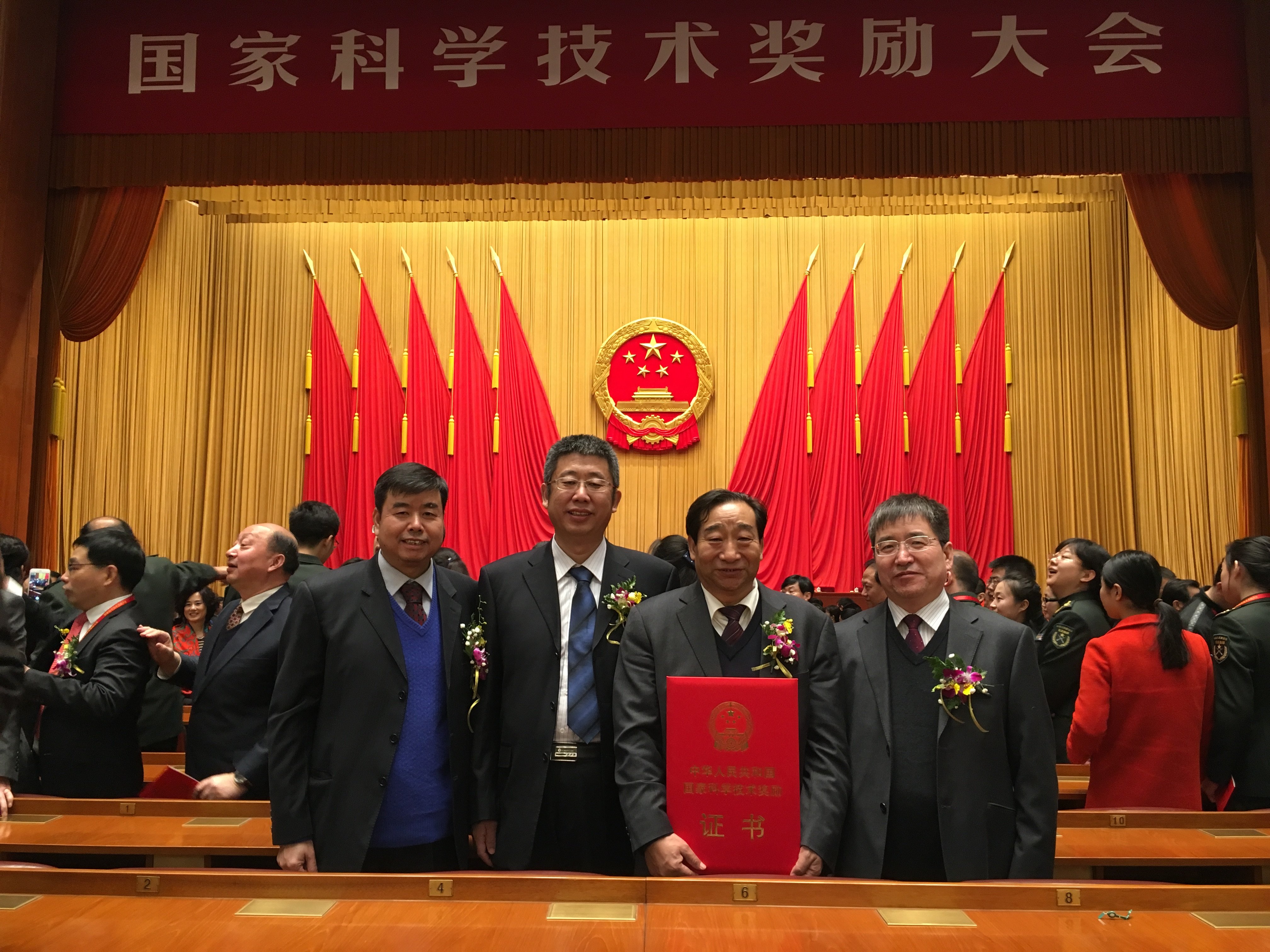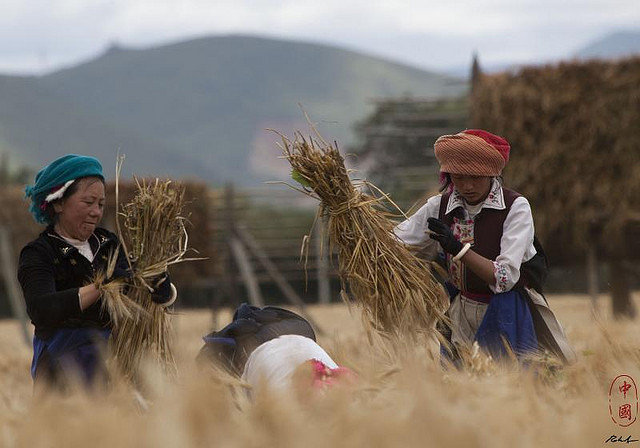
BEIJING, China (CIMMYT) – Top wheat scientists from the International Maize and Wheat Improvement Center (CIMMYT) and other research institutions are the recipients of a prestigious award from China’s State Council.
Zhonghu He, distinguished scientist and country liaison officer in China, together with CIMMYT’s long-term collaborators from the Chinese Academy of Agricultural Science and agricultural science academies in seven provinces, received the award for developing high yielding, disease resistant, and broadly-adapted varieties from CIMMYT germplasm. China’s President Xi Jinping and Prime Minister Li KeQiang of the State Council attended the ceremony last week at the Great Hall of The People in Beijing.
“This award is the result of more than 30 years of CIMMYT-China collaboration, reflecting the importance of our work in the country” said He. The award recognized work leading to 18,000 CIMMYT wheat accessions stored in Chinese gene banks, adaptation of CIMMYT wheats to China through multi-locational trials and molecular markers, successful breeding for multiple resistance to rusts and powdery mildew based on adult plant resistance, the development and extension of 45 leading varieties derived from CIMMYT germplasm and the training of Chinese scientists. This success is also largely due to the long-term commitment of CIMMYT scientists such as Sanjaya Rajaram, Ravi Singh, and Javier Peña.

CIMMYT and China started collaborating in the early 1970s, shuttle breeding between Mexico and China to improve wheat disease resistance was initiated in the mid-1980s, and the CIMMYT-China Office was opened in 1997. More than 20 Chinese institutes have been involved in germplasm exchange and training.
Chinese wheat breeders have increasingly used CIMMYT breeding stocks to generate new wheat varieties, with CIMMYT germplasm contributing about 7 percent of the genetic material in Chinese wheat varieties during the past three decades and about 9 percent after 2004. More than 26 percent of all major wheat varieties released in China since 2000 contain CIMMYT germplasm, contributing to higher yield potential, rust resistance, and better quality wheat. Overall, 3.8 million to 10.7 million tons of added wheat grain worth between $ 1.2 billion and $ 3.4 billion (based on 2011 prices) have been produced as a result of CIMMYT germplasm, according to the “Impact of CIMMYT Wheat Germplasm on Wheat Productivity in China” authored by Jikun Huang and his colleagues at the Center for Chinese Agricultural Policy of the Chinese Academy of Science (CAS).
 Capacity development
Capacity development